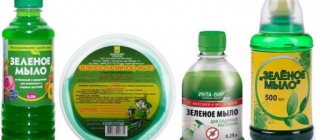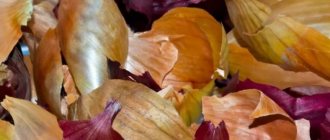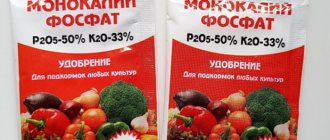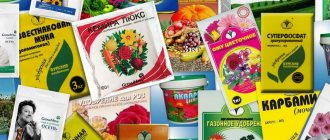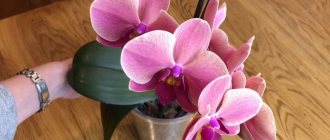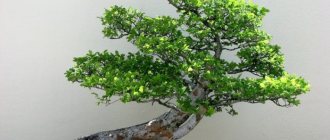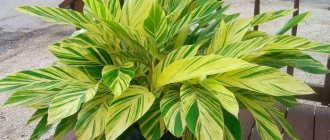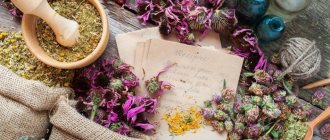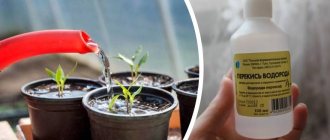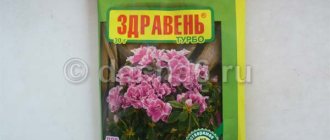An insecticide with contact action. Active ingredient: potassium salts of fatty acids. Produced by several manufacturers: Green Belt, Fasco, Sadovnik, etc., in the form of a solution (0.25 l, 0.5 l). Ingredients: water, potassium salts of fatty acids, natural fats and vegetable oils. It is considered an environmentally friendly drug.
Used to protect garden crops and indoor flowers from pests: thrips, scale insects, aphids, bedbugs, pennies. Potassium salts are also effective against some types of mites, but are not effective or have little effect against whiteflies and scale insects!
Application
Green soap is used in its pure form, diluted with water, or as an adhesive in solutions where an alkaline reaction is acceptable (the pH of the solution is from 7 to 8), or in a mixture with other agents (infusions of herbs, tobacco, etc.).
How to dilute green soap against pests:
- against aphids and mites 200-400 g of green soap per 10 l
- against scale insects 200-300 g of green soap per 10 l
- against aphids 200-400 g of green soap per 10 l
To combat bedbugs, green soap is used as part of a complex solution: 4 parts potassium soap, 1 part turpentine, 2 parts kerosene and 12 parts water.
For indoor flowers, the recipe is simple: dissolve 1 tablespoon of green soap in 1 liter of warm water. If a measuring cup is included, use it as directed.
Features of the drug
The effect of soap on insects and arthropods (ticks) is to envelop the body with a film and block the respiratory tract.
Green soap can be mixed with other insecticides, in particular with decis, karbofos, intavir, at the rate of 40-100 g per 10 liters of water; soap, in addition to its main properties (toxicity to pests), gives the pesticide solution better stickiness, i.e. the solution forms a more stable film over the surface of the sheet.
For the same reason, green soap is often used in combination with fungicides against a number of plant diseases, for example, powdery mildew, rust, and fungal spotting. Usually the main component is some kind of copper-containing preparation, for example, copper sulfate. To prepare 1 liter of solution, pour exactly 800 g of warm water into a 1-liter jar, add 30 g of green soap and mix. In another jar, 2 g of copper sulfate is dissolved in 200 g of warm water. Then slowly (in a thin stream) with continuous stirring with a wooden stick, pour the vitriol solution into the soap solution. This solution is sprayed on the plants leaf by leaf against fungal infections.
Gardeners often use a solution of green soap against powdery mildew and other diseases, in combination with soda ash. In this case, take 50-100 g of soap and 50 g of soda per 10 liters of water.
Another effective recipe for ticks: 20 g of ground dried garlic (40-50 g of fresh garlic), 200 g of green soap, diluted with water to 10 liters of water. If the garlic is fresh, you need to crush it in a mortar, if dry, steam it in a small amount of boiling water.
No more than 3 applications per season are allowed with green soap. Process for the last time no later than 5 days before harvest.
Toxicity
Green soap has a hazard class of 4 (low hazardous substance). Not phytotoxic. Practically non-toxic for birds, earthworms, soil microorganisms and bees (the border protection summer zone for bees is at least 3 - 4 km, the flight limit for bees is 48 - 72 hours).
Fruit or berry trees and shrubs can be processed at least five days before harvest. If green soap is not used in its pure form, but with the addition of other pesticides or turpentine, then treatments are carried out before flowering, or after harvesting, no later than 30 days before harvesting.
Security measures. Handle using gloves. While working, you must not smoke, drink, or eat. Dilute the working fluid solution exclusively in glass or porcelain containers. Do not use dishes that have come into contact with alkali for household purposes or cooking. Store the drug in a cool, dry room at a temperature from -10C to +35C, separate from food and medicine, out of the reach of children and pets! Storage of the working solution is not allowed. The shelf life of green soap is 1-2 years (see on the package).
First aid for poisoning: if the drug gets on the skin, rinse with plenty of water, to neutralize the alkali, apply a gauze bandage soaked in a 5% acetic acid solution to the affected area after rinsing (for 10 minutes). After removing the bandage, rinse the skin with water. In case of contact with eyes, rinse thoroughly with running water for 15-20 minutes. Then rinse the eyes with a 2% solution of boric acid and drip albucid. Do not hesitate to consult an ophthalmologist. If ingested, drink 3-4 glasses of water, induce vomiting, take several tablets of activated charcoal, and seek immediate medical attention.
All experienced gardeners and gardeners are familiar with fungicidal soap. This product has proven itself to be excellent. It stands out from the rest due to its compatibility with other drugs, safety for humans and high efficiency.
How it works
After spraying, an environment is formed that prevents the development and reproduction of parasites. Adults that are on the treated plant die, as they lose the ability to eat and breathe.
This happens because the drug used contains components that turn into a film. It covers all surfaces, tissues, including the insects themselves. Layed eggs that have been exposed to the product stop developing and gradually die.
Important: insecticidal soap is used not only to fight insects, but also to prevent their appearance.
Post navigation
For adherents of ecological farming (phytosporin, peat pots and seedling tablets, weed infusion, ...) Green soap is a completely acceptable insecticide for plant protection. Green soap is a special insecticide that selectively affects certain pests of cultivated plants; At the same time, the impact on the environment is minimal. An insecticide such as green soap can be used even during the flowering period of plants.
In addition to its own insecticidal properties, this drug enhances the effect of other means of protecting garden crops. In particular, the effect is achieved due to better adhesion of substances and the creation of a protective film on treated surfaces. This applies to some pesticides intended to control pests and diseases. Addition to folk remedies also shows positive results.
Related article: Confidor Extra: instructions for use, reviews, storage of the drug
What is green soap used for?
It is rarely used in its pure form; it is often diluted with water. Plants of any type are sprayed to get rid of insects and prevent their appearance. The substance also helps to cope with a number of diseases that are inherent in various domesticated crops.
From diseases
In the treatment and prevention of many plant ailments, the drug is used as part of a highly effective mixture based on copper sulfate. This solution is considered the most effective remedy against fungi.
Dilute 250 g of soap into 10 liters of water at room temperature. 25 g of copper sulfate are dissolved in 2 liters of hot liquid. When both preparations are ready, slowly pour the second one into the soap solution, stirring thoroughly during the process.
The above-ground part should be sprayed three times a month. When it comes to outdoor plants, you need to choose a day with little sun and no wind. There should be no rain in the next week.
Processing indoor flowers
For small representatives of home flora, little solution is needed. 1 tbsp is enough. active substance per 1 liter of water at room temperature. It is better if the liquid sits for at least a day before cooking.
Some instructions for using insecticide for the most popular indoor plants, as an example.
Green soap for orchids, how to use:
- The maximum dose is 100 ml per 10 liters of water.
- If the flower is severely damaged, the procedure is repeated.
- No more than 3 treatments with an interval of 1 week.
- Cut flowers if present. If the solution gets on them, the buds will quickly wither and fall off.
- After spraying, place the pot with the sick “tenant” in quarantine and cover it with film to enhance effectiveness.
Green soap for violets, method of use:
- The proportions of the solution are 200 ml per 10 liters of water.
- Spray 1 to 3 times weekly.
- Prevention after treatment - 100 ml per 10 liters monthly in the summer, and then - once a season.
- To combat severe disease, use in combination with copper sulfate - 200 ml of soap and 25 g of copper sulfate per 10 liters.
Tip: for the convenience of measuring the amount of the drug, you should know that 1 tbsp. - this is 50 ml of Green soap.
Pest use
Judging by numerous user reviews, this product has proven itself in the fight against most insects when spraying ornamental, flowering, climbing, fruit and berry plants.
On average, the emulsion is prepared in a proportion of 50 ml per 1 liter of hot water. But more accurate calculations of consistency are made by referring to the size of the flora representative and the degree of parasite damage.
Important: before spraying, you need to cover the earthen ball with film, otherwise the plant may die if the substance gets into the soil.
When fighting sucking plant parasites, a more effective combination is prepared: 1 kg of tobacco waste is left in a bucket of water for 24 hours, filtered, and 10 liters of water and 25 g of soap are added. Wood ash is often used as an additional component.
Can it be used in cosmetology?
There is an analogue of this drug of the same name, but with different properties. Green soap, depending on the manufacturer, has a viscous or solid structure. The composition is closer to a regular hygiene product, but contains a whole complex of plant components, for example: pine nut extract, pine needle extract, etc. Used universally to cleanse the body, hair and scalp.
Green soap can be included in detergents in varying concentrations, from 20 to 70%. Due to their environmental friendliness and naturalness, these products are suitable for allergy sufferers.
This is interesting: in the northern regions, such soap is the basis of mixtures used to treat frostbite of the skin.
How to prepare a solution: proportions
Presence of sediment is normal. The substance must be shaken before use. To make the mixture more effective, you should use soft water.
Green soap for plants is mixed with other insecticides: Decis, Karbofos, Intavir. At the rate of 1:2 per 10 liters of water. This is done in order to enhance the effectiveness of the treatment in destroying fungal spotting, rust, powdery mildew and other persistent and dangerous diseases.
Recommendations for determining the required consistency:
- Together with soda ash, it helps destroy powdery mildew and most other diseases of similar etiology. For 10 liters of water, dilute 50-100 g of soap (depending on the degree of damage) and 50 g of soda.
- Green soap for spider mites and aphids - 200-400 ml of active ingredient per 1 bucket of water. Spraying is carried out during the active growing season or at the end of November.
- To spray a plant affected by scale insects, you need a solution of 300 g of soap per 1 bucket of water.
- As the main weapon in the fight against bedbugs, prepare the substance in the following proportions: 4:1:2:12 - Green soap, turpentine, kerosene, water at room temperature.
The standard therapeutic concentration is 250 g per 10 l, and the preventive concentration is 100 g per the same amount of liquid.
Important: no more than 3 soap treatments per season are allowed. Last time no later than 5 days before harvest.
When making a base or complex mixture, the main thing is that all components dissolve in water.
Green soap: instructions for use
The use of such an effective remedy must also be correct, otherwise you can do a lot of harm. Choosing consistency is just the beginning. You should calculate the time frame between pollinations and choose a good period for work. Otherwise, the result will not be as expected.
Spraying is carried out during cloudy periods or in the evening when the sun is moving towards sunset.
If you need to use Green soap for pests, the instructions are as follows:
- At the beginning of spring, before the formation of buds, treatment is carried out in order to get rid of the offspring of parasites that were left behind from last year and survived the winter. A similar procedure takes place in late autumn.
- As a preventive measure against pests, the substance is applied in the form of a 2-4% solution. The drug is especially effective against aphids and spider mites.
To treat adult trees, prepare a 1:2 solution, and at the height of the season, when there is a lot of greenery on branches and bushes, the soap is diluted up to 12 times.
Recommendations for use according to plant type: table
| Fruit trees | Treated in early spring for preventive purposes. If necessary, the procedure is repeated in the summer 2-3 times maximum. |
| Berry bushes | Sprayed in the spring, before flowering, and in the fall, after the entire harvest has been harvested. |
| Vegetables | Cabbage, cucumbers and tomatoes are irrigated during the seedling growing period. Other crops - as needed, even during active growing season. |
| Floral and decorative garden plantings | Treat at the first sign of infection. If the procedure occurs during budding or flowering, you should spray carefully so that the substance does not get on the ovaries. |
| Houseplants | Treatment can be carried out throughout the year. After applying the solution, the flower is quarantined, covered with a large bag or film for 3 hours. Then dry well and rinse off any remaining product. |
Pros and cons of tar soap
Tar soap as an insecticide has its advantages and disadvantages. The advantages of the product include:
- safety - tar soap does not harm plants and humans;
- lack of resistance - even if you constantly spray crops with a homemade solution, insects will not develop resistance to it;
- affordable price;
- ease of preparation;
- protective effect - tar soap prevents re-infestation by insects for several weeks.
At the same time, the product has certain disadvantages:
- strong unpleasant odor;
- allergenicity - before using the product you need to make sure there is no intolerance;
- negative impact on beneficial insects - tar soap repels not only pests, but also bees;
- mild effect - the product does not kill parasites, but only forces them to leave the attacked plants.
It is not recommended to use tar soap against pests in the country during the fruiting period of crops. If you spray a home remedy on a ripening crop, it will acquire an unpleasant odor and a bitter taste.
Security measures
Processing is carried out with gloves. As with spraying with other chemicals, do not pause for lunch or smoke during the process.
- Use only for spraying plants, do not add to preparations for root treatment.
- Do not wash your hands with the substance or wash things.
- After the procedure, wash your hands with normal hygiene products and rinse the instruments well.
The solution is prepared in a glass or porcelain container. Do not use utensils that come into contact with alkali, food, or are used for household purposes.
Storage conditions
Store in a cool, dry place, at a temperature of -10...+35°C. At a great distance from food, seeds, seedlings, etc.
Important: the shelf life of Green Soap is up to 2 years (see on the package). The working solution cannot be stored for long periods of time, especially when mixed with other substances, as they may react.
It is better not to change the original container unless absolutely necessary. If this is unavoidable and the container is damaged, the replacement must be tightly closed.
Toxicity
The drug is safe for animals, people and plants themselves. There have not been any cases of poisoning, allergies or death of flora due to Green Soap. Naturally, subject to compliance with safety rules. The substance is harmless to large insects and worms.
The main thing is to process crops exclusively before fruit formation begins.
Important: containers with Green soap should not be accessible to children or animals. If the substance is accidentally spilled on a hard surface, the area should be wiped with a solution of table vinegar and then with clean water.
First aid for poisoning
In diluted form, the product is not dangerous to humans, but, like any other chemical, in individual cases it can cause harm.
Recommendations for mitigating the effects of damage:
- In case of contact with skin, rinse with cold water. If a red spot or itching appears, apply a bandage of gauze soaked in a 5% solution of acetic acid. 10 minutes is enough. Then rinse again with cold water.
- If the mucous membrane of the eyes is affected, rinse well with running water for 15-20 minutes, or until the burning sensation goes away. Then rinse with a 2% boric acid solution and drip albucid. If discomfort does not go away, seek medical help from specialists.
- If you accidentally swallow Green Soap, drink 3 glasses of water, provoke a gag reflex, take 4-6 tablets of activated charcoal and consult a doctor.
Precautionary measures
Green soap has a fourth class of danger. It is low toxic to people and animals. It is necessary to protect your hands from droplets throughout the entire working process. During spraying, smoking and drinking are prohibited.
- The working solution is diluted in a glass container. In case of contact with eyes, rinse them with plenty of water and apply sodium sulfacyl drops. If discomfort does not disappear, you should consult an ophthalmologist.
- The solution that gets on the skin is washed off with running water. If soap gets into the gastrointestinal tract, you must induce vomiting and drink activated charcoal. If symptoms of poisoning do not disappear, you should seek medical help.
The drug is stored for two years from the date of manufacture, in a dry, dark place. It is acceptable for sediment to form over time. The container with liquid should not be accessible to children and animals.
- 1
Fertilizers for petunia - 2
Yellow leaves on tomatoes
Green soap: reviews
- We have been using this product for many years, since we have a large garden, and not a single season is complete without pests. There are always a few bottles in stock. If you do not start the problem, you can solve it using only soap.
- I love growing cucumbers in the garden. But one day they were attacked by aphids. I tried everything, but a neighbor, an avid gardener, recommended Green Soap, which helped save the harvest. Now I only use this drug.
- I have been growing indoor plants for many years. Recently I encountered such a scourge as mealybugs. Most of the drugs used did not help. After the death of two plants, I despaired and began asking advice from consultants in gardening stores, where I did most of my shopping. They immediately offered Green Soap. It helped only after the second treatment, but now I’m doing preventive measures. Now all the flowers are healthy.
Before buying expensive drugs, you need to try a natural remedy that has been tested by many and has proven itself. Green soap is universal in protecting plants from diseases and parasites. It would not be superfluous to keep one bottle in reserve so that, if necessary, you can provide timely assistance to a suffering representative of the flora.
What helps against aphids?
Options for how to get rid of aphids
, quite a bit of.
... We list what you can spray plants against aphids using folk remedies.
- Soap solution...
- Soap and soda...
- Zola...
- Tobacco...
- Infusion from tomato tops...
- Wormwood...
- Onion …
- Zest
Interesting materials:
Why a headboard? Why is there a spinner on an office chair? Why season a cast iron frying pan with salt? Why season a cast iron frying pan? Why do they put a plate on a plate? Why a three-row cornice? I closed Explorer in the task manager, how can I start it? I closed a tab, how can I get it back? Reserved by the system how to hide? How to wash washed bed linen?
Composition of green soap
Green soap consists only of natural ingredients.
Green soap is made from natural ingredients. Despite its name, it is not soap in the literal sense of the word, but has a thick soap base (adhesive soap) due to potassium salts of fatty acids. The universal remedy for controlling pests and plant diseases “Green Soap” includes ingredients of plant and animal origin:
- animal fats;
- potassium salts of fatty acids;
- natural vegetable oils;
- water.
Among animal fats, preference is given to solid fats from cattle and lamb. Among vegetable oils, manufacturers choose cheaper ones - soybean and sunflower.
Composition of Green Soap and effects on pests
Green soap, also called potassium soap, is obtained by treating cattle fats or vegetable oils with potassium hydroxide. As a result of the chemical reaction, a greenish soap emulsion is formed, which easily dissolves in water. The main active ingredient of this drug is potassium salts of fatty acids.
Green soap is an environmentally friendly product for protecting plants from pests and diseases
Green soap is an environmentally friendly product, harmless to people and pets if you follow simple precautions:
- Storage in tightly closed containers, out of reach of children and animals.
- Work with gloves, goggles and a respirator or gauze bandage.
- Personal hygiene after spraying plants.
This drug is classified as the fourth group of harmful substances in terms of the degree of impact on the human body.
Interstate safety classes of substances for humans
Which hazard group a chemical compound belongs to is determined by the dose that causes death. Group 4 includes those substances that will become fatal if you swallow 50 grams or more per kilogram of weight.
In plant growing, green soap is used to control pests:
- aphids;
- thrips;
- slobbering penny;
- leafhoppers;
- earwigs;
- scale insects;
- spider mites.
Photo gallery: pests that Green soap can handle
The film that forms on the surface of plants after treatment with a solution of the drug has several consequences for pests. The most important thing is the destruction of the chitinous cover. In addition, they can no longer:
- breathe;
- move;
- eat.
Directions for use, compatibility with other drugs
Spraying plants with Green Soap protects against infection by diseases: late blight, powdery mildew, cytosporosis, scab and pests: whitefly, mealybugs, spider mites, aphids. Usage options:
- With chemicals . When treating plants with chemicals, add 100 ml of soap to the prepared solution (10 liters) of fungicides (insecticides). The soap solution, sealing the chemical, prevents it from quickly evaporating, which facilitates more complete penetration into the deeper layers of plants. This allows you to fight diseases more effectively and achieve quick, sustainable results.
- With infusions and decoctions . To combat harmful insects and plant diseases, decoctions and infusions of herbs, tobacco, garlic, ash are often used with the addition of soap in the amount of 50-100 ml/10 liters of decoction.
- Using soap as an independent remedy . For preventive measures and the fight against plant diseases and infestation by harmful insects in the initial stage, prepare a solution of the “Green Soap” drug at the rate of 250/400 ml per 10 liters of water. The resulting product is mixed well and applied by spraying.
Many flower lovers do not know how to grow aktar.
Purpose of green soap
Green soap, or potassium soap, or green potash soap is a means for the preventive treatment of plants against damage by pests and fungal diseases. It is used as an ingredient in self-prepared mixtures for treating plants against:
- aphids,
- scale insects,
- false scale insects,
- whiteflies,
- mealybugs,
- spider mites.
And the alkaline environment created on the surface of plants by this drug inhibits the development of fungal infections:
- powdery mildew,
- rust,
- late blight,
- cytosporosis
- and gray rot.
Areas of application of green soap
Green soap works well with other drugs.
Green soap is used only for plants: as a means of combating pests and diseases.
- Fruit trees and berry bushes. Pear, apple, cherry, and plum trees are treated in early spring to prevent diseases. If necessary, repeat the treatment 2-3 times during the summer season. Raspberries, gooseberries, and currants are sprayed in the spring, before flowering, and in the fall, after harvesting.
- Vegetable crops. Tomatoes, cucumbers, cabbage can be processed while growing seedlings (for prevention). Strawberries, onions, garlic during the growing season, potatoes and other crops as needed.
- Floral and ornamental plantings in gardens and on personal plots are treated with green soap against pests at the first signs of infection. When treating flower crops during budding and flowering, carefully spray the plants, trying not to get on the ovary and open flowers.
- Houseplants. Houseplants are treated with green soap all year round ; after treatment, the flower is placed in a large bag or covered with film. Dry well, do not wash off the solution.
Onion peel
An infusion of onion peels is extremely effective in combating aphids. As you peel onions in winter, you don’t have to throw them away, but gradually put aside the peels.
Take 200 g of onion peel, put it in a bucket of warm water and leave for the next 15 hours. Use gauze or a sieve to strain the resulting infusion.
The resulting composition, without additional dilution, is used for spraying against aphids (with varying degrees of infestation and as a preventive measure).
Aphids can pose a serious threat to your garden. Timely measures taken will help cope with the pest in a short time and without significant losses.
Aphids are the worst enemy of gardeners. Once in the garden at the beginning of summer, the pest multiplies rapidly. One female produces hundreds of thousands of offspring. The insect's favorite delicacy is young shoots and plant leaves. Folk remedies will help in the fight against aphids.
Cautions
The product “ Green Soap” for plants is non-toxic, safe, and does not cause allergic reactions or poisoning. It does not pose a danger to the environment and cannot harm insects, animals or people. However, despite all the safety of use, there are still rules that should be followed when using this drug.
- Use soap only for spraying plants, do not add it to root treatments.
- Never use for washing hands or washing clothes.
- Use protective equipment: glasses, rubber gloves.
- After treating the plants, rinse the sprayer and the container in which the solution was diluted thoroughly.
- In case of contact with mucous membranes of the skin and eyes, rinse the solution with plenty of water.
- For the soap to be beneficial, use it according to the instructions, do not increase the amount of the drug to achieve a quick effect.
Attention! Using a product for indoor plants, first protect the earthen ball by tightly covering it with film and securing it to the trunk of the plant.
What pests are tar soap used in the garden?
Tar soap is a universal remedy and helps get rid of most pests in the garden. Most often, solutions are used to repel several parasites.
From aphids
Aphids are one of the most dangerous pests and cause damage to both vegetable and garden crops. Small insects stick to the leaves of plants in large colonies and suck the juices out of them within a matter of days.
Tar soap against aphids is used in the form of sprays. The treatment helps drive pests off the leaves and prevents them from returning for several weeks.
Tar soap forms a film on the leaf blades and prevents aphids from feeding on plant juices
Tar soap forms a film on the leaf blades and prevents aphids from feeding on plant juices
Against the Colorado potato beetle
The use of tar soap in the garden is in demand when crops are damaged by the Colorado potato beetle. Usually the product is used like this: dissolve a small bar in a bucket of warm water and spray the plants generously. You can also first collect pests by hand or wash them off the leaves with a low-pressure stream of liquid, and then treat them with soap.
The home remedy forms a thin protective film on the stems and plates of plants. This layer does not interfere with the processes of photosynthesis and air exchange, but repels pests. The Colorado potato beetle does not like the pungent smell of tar soap and cannot gnaw through plant leaves after treatment, so it quickly leaves the garden.
Attention! You need to start spraying vegetable crops at a time when there are still not very many pests on the bushes, and they have not had time to cause much damage to the plantings.
It is recommended to treat plants against the Colorado potato beetle in both dry and rainy weather.
From ants
Ants in general do not belong to the category of pests, but their presence in the garden is considered undesirable. Insects contribute to the spread of aphids throughout plants, and also feed on crop leaves if they are already damaged by parasites.
Tar soap helps get rid of ants. It can be used to spray plants, but the best effect is obtained when treating anthills. Tar soap is mixed with baking soda and garlic, diluted with water and watered abundantly over insect buildings. The method is considered gentle - the ants do not die, but are forced to leave the site.
Ants on the site pose a particular danger to fruit and berry crops
Reviews of green soap
Irina, gardener. I want to talk about the use of Green Soap in gardening. We have been using it for many years. We always have 2-3 bottles in stock. Amazing product: environmentally friendly and cheap. If the problem persists, you can only deal with it with soap. We have small grandchildren, so we don’t use chemicals. We treat fruit trees after bud break. Add ash to infusion or with essential oils.
Rules for the use of the potent insecticide Aktellik, for more details follow the link https://cveti-rasteniya.ru/aktellik-instrukciya-po-primeneniu.html
Igor Petrovich, summer resident. Aphids attacked my cucumbers. I tried different means: pollinated with ash, sprayed with garlic infusion - nothing helped, after watering or rain the aphids returned. A neighbor in the country, who has been growing vegetables for many years, advised adding Sadovnik green soap to the infusion. He explained that the result would be a film that prevents the processing agents from being washed off. That's what I did. Thank you, neighbor, I saved the harvest. Now I always use this product.
Treating a houseplant with green soap.
Marina, lover of indoor flowers. I have been growing indoor plants for many years. Last year I encountered a scourge called mealybug. I tried many drugs, but the bug turned out to be very tenacious. Treatment with Fufanon and Fitoferm (which always helped) did not bring positive results. I accidentally found out about the product Green Soap. Out of despair (two plants died), she took the infected flowers out onto the terrace and treated them with soap once a week for two months. The little worm has disappeared! I continued the treatment for prevention. Now all my flowers are healthy, and I always have Green Soap in stock.
Efficiency and effect of the drug
Green soap has a number of features that affect its effectiveness and determine the principle of action, they are as follows:
- Upon contact with insects, the drug completely envelops their bodies, which prevents them from performing basic respiratory processes, leading to the rapid death of the parasites.
- In some cases, the combined use of green soap and various insecticides is carried out, this can significantly increase the degree of their stickiness. After this, the drug envelops the leaves of the plant, creating a durable film that is difficult to wash off even with water. Thanks to this, a deeper and longer-lasting effect occurs.
